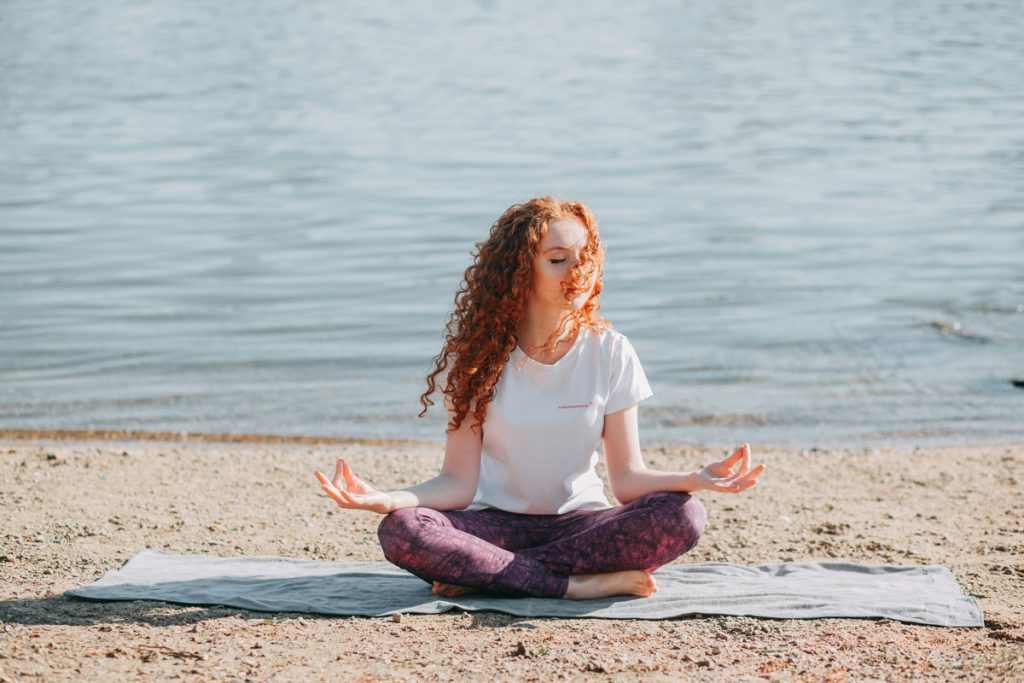When we think of trauma recovery, yoga might not be the first solution that comes to mind. Yet, for many individuals navigating the long road of healing, trauma-aware yoga can be a powerful—and surprisingly gentle—support.
I’ve seen this firsthand, both in my own healing and through working with clients. With the right approach, yoga becomes far more than stretching or fitness—it becomes a way to reestablish safety in the body, calm the nervous system, and rebuild trust in ourselves from the inside out.
Trauma and the Nervous System: A Hidden Link
Trauma isn’t just about what happened. It’s about how the body responded—and how it still may be responding. Even long after a traumatic experience ends, the nervous system can remain stuck in patterns of hypervigilance, freeze, or emotional overwhelm.
This is why people recovering from trauma often describe feeling “on edge,” disconnected from their body, or exhausted but unable to rest. It’s not a mindset issue—it’s a nervous system issue. And that’s where trauma-aware yoga (also referred to as trauma-informed yoga or trauma-sensitive yoga) offers something uniquely powerful.
Why Body-Based Tools Work
Traditional talk therapy can be incredibly helpful, but trauma often lives beneath the surface of conscious thought, in the body. Yoga and breathwork are body-based practices that support healing from trauma from the inside out—not just by thinking about change, but by feeling it.
When guided with care – through trauma-aware yoga, trauma-informed yoga, or trauma-sensitive yoga – these practices help individuals:
- Slow down and reconnect with physical sensations safely
- Learn to regulate breath and movement to signal “I am safe” to the brain
- Gently process stored tension and emotion without having to retell their story
Over time, this mind-body reconnection fosters resilience, self-awareness, and greater emotional balance.
What Trauma-Aware Yoga Looks Like
You don’t need to twist into a pretzel, touch your toes, or even roll out a mat. Trauma-aware yoga focuses less on poses and more on presence.
Here are a few supportive practices that anyone can explore:
Grounding
Simple movements, such as pressing your feet into the floor or placing a hand on your heart, can help reestablish a sense of “here and now.” This can help interrupt dissociation and anxiety spirals.
Breath Awareness
Conscious, gentle breathing—especially slow exhales—can shift the body out of a stress response. Even a few mindful breaths at a time can create a noticeable difference.
Mindful Movement
Slow, intentional movement (like a gentle seated twist or forward fold) invites curiosity without pressure. These movements can help release held tension and increase felt safety.
Internal Mantras
Repeating phrases like “In this moment, I am safe” or “I am kind to myself” can soothe the inner critic and anchor the mind during emotionally challenging moments.
These practices are kept intentionally small. In trauma recovery, small is powerful.
A Note for Families and Caregivers
If you’re supporting a loved one who’s recovering from trauma, it can be tempting to push for solutions or “fix it.” But healing from trauma doesn’t happen on a strict timeline—and it doesn’t always look like progress.
Sometimes, the most helpful thing you can offer is encouragement to pause, breathe, and come back to the present moment. Trauma-aware yoga can be one path toward doing just that, without pressure or performance.
Closing Thoughts: A Different Kind of Strength
Recovery from trauma isn’t about becoming someone new. It’s about returning to who you were before the overwhelm—maybe even discovering a deeper version of yourself in the process.
Yoga won’t erase trauma. But it can offer something just as important: a felt sense of safety, connection, and self-trust. One breath, one movement, one moment at a time.
About the Author: Michelle Lamansky is a trauma-aware yoga teacher (RYT-500) and holistic health coach who helps clients regulate their nervous systems, reduce stress, and reconnect with themselves through breath, movement, and presence. Learn more at www.balancedyogatn.com
Photo by Natalie Bond: https://www.pexels.com/photo/woman-doing-yoga-exercise-at-the-sea-shore-3759660/
The opinions and views expressed in any guest blog post do not necessarily reflect those of www.rtor.org or its sponsor, Laurel House, Inc. The author and www.rtor.org have no affiliations with any products or services mentioned in the article or linked to therein. Guest Authors may have affiliations to products mentioned or linked to in their author bios.
Recommended for You
- Dealing With Toxic Family Members: A Survival Guide for Family Gatherings - December 22, 2025
- When to Seek Help from a Child Psychiatrist: 6 Signs Your Child Needs Support - December 19, 2025
- When Everything Feels Urgent: How Clarity Protects Your Mental Health - December 18, 2025





